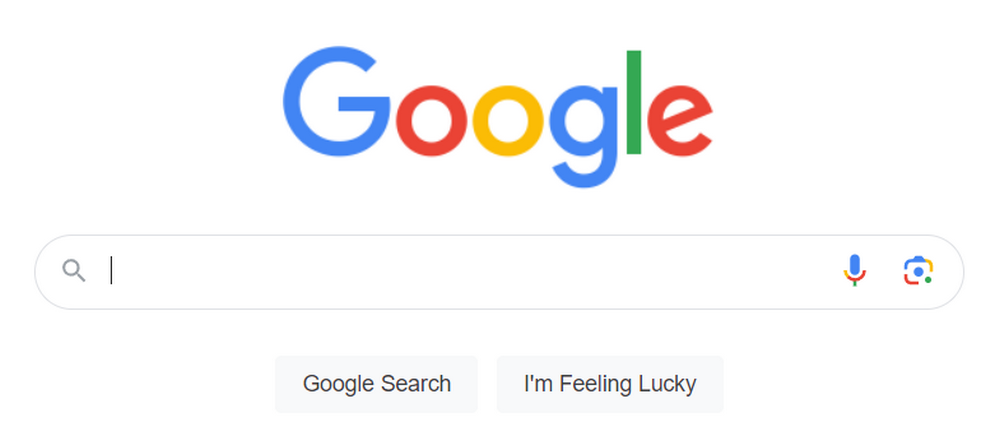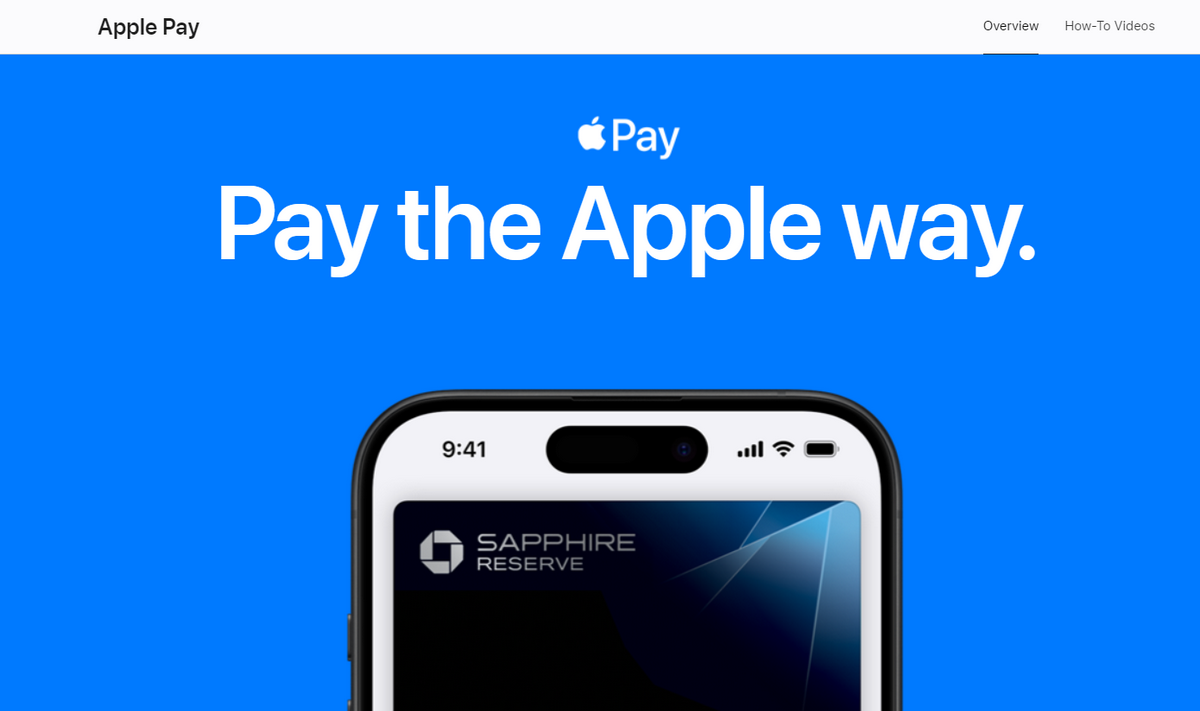Introduction
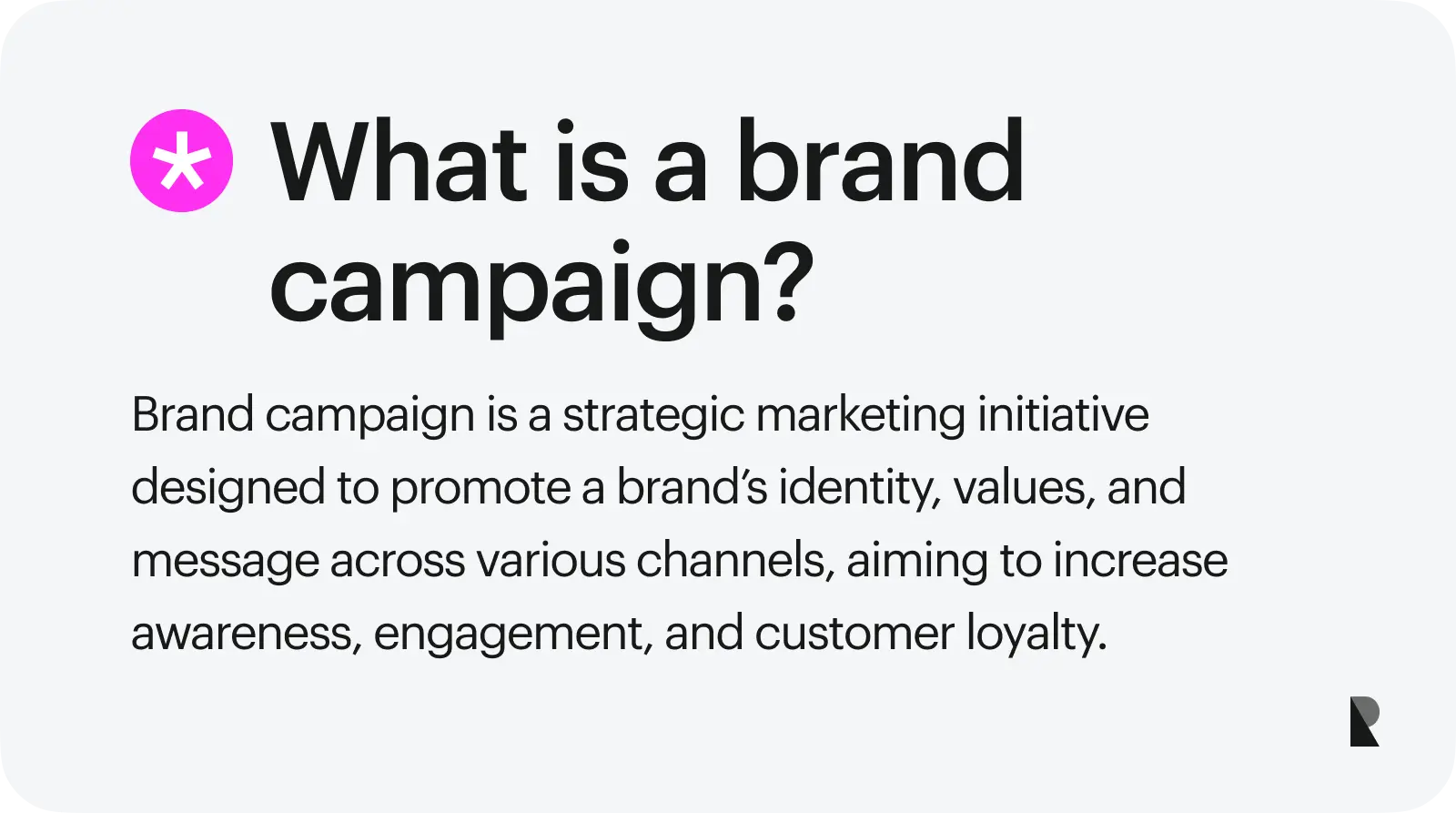
Did you know that over 60% of customers seriously consider brands' activity in the market and society? According to studies, modern-day consumers are concerned about a company's place in the community. They follow their beloved companies on social media and expect them to be socially conscious.
Many consumers choose brands as an extension of their identity. They prefer products whose values, vision, and mission align with theirs. They use them not only as commodities or approaches to solving their problems but also as means to demonstrate their individuality, highlight their unique traits, and declare their position and ideology.
That means products are no longer the sole deciding factor in purchasing intent. Today, brand identity, image, and reputation take the reins and are the main determinative, making brand campaigns crucial for business success like never before.
Branding campaigns are targeted, multifaceted, and multi-purposeful communications. They introduce the company's personality, vision, ideology, and authenticity. They speak directly to the target audience through meaningful, impactful messages, build the company's perception, and establish healthy and trustworthy relationships in the community. Let's dive into their definition, importance, types, and examples to see how your business may benefit from them.
What is a brand campaign?
A brand campaign involves well-coordinated actions and targeted communications across various distribution channels, interaction points, and media. It is the foundation for a brand's presence, recognition, and reputation and has the unique ability to increase brand equity.
Communicating core values, a brand campaign shapes how the target audience perceives a business.
The main goal of a brand campaign is to connect specific attributes, features, qualities, and achievements with the company and establish its presence in people's minds. It evokes emotions, aids the consumer's orientation amongst the offerings, and separates it from the competition.
Unlike marketing, a branding campaign zeroes in on the big picture to create a lasting impression and inspire loyalty. Although not product-focused, it supports the company's financial success, influencing its conversions, engagement, and revenue.
The role of a brand campaign in a company's successful existence is hard to underestimate. It brings proper association in customers' minds and amplifies the efficacy of all the company's endeavors in a meaningful and impactful way.
Although it requires devotion, commitment, and certain investments, any company may unlock its true potential. Collaborating with a brand strategy company helps translate that potential into measurable brand impact.
Why are brand campaigns important to your business?
So, why should you bother creating a brand campaign for your products? Branding campaigns are crucial for businesses of all sizes. Whether you are a startup or an industry giant, they cement your position in the market and assist in growing and achieving marketing, advertising, and financial goals.
The most respectable industry leaders with successfully launched products regularly conduct brand campaigns to regain their position in the market, foster loyalty, and reinforce the brand's image. Though no surprises, centered around the company's unique personality, vision, mission, and value, they are widely used to accomplish the following tasks.
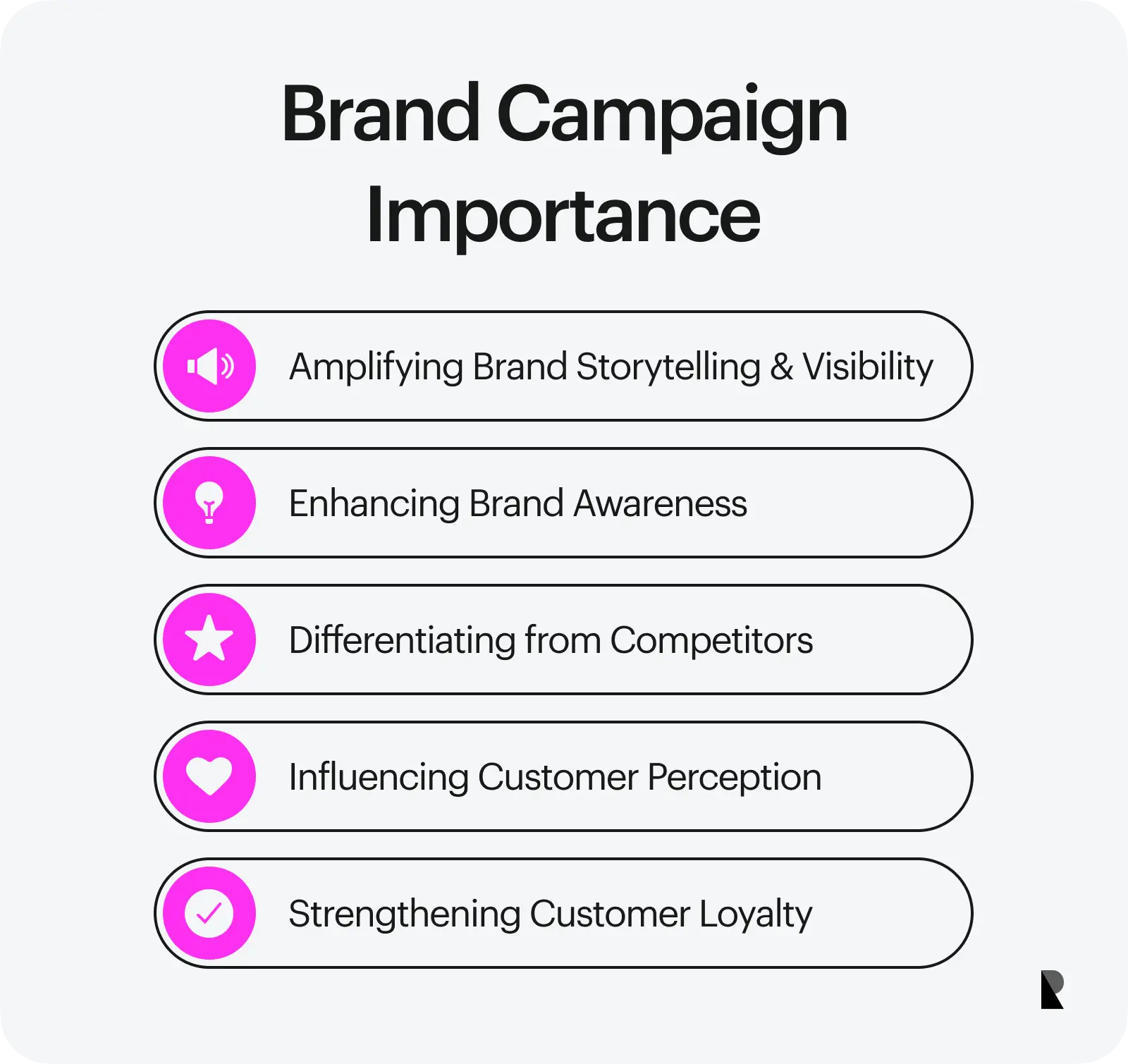
Get the story and message of business in front of an audience
A branding campaign tells the story and gives instruments to manage, control, and influence customers' perceptions of the company. It impacts public reputation and builds a strong working culture.
Build brand awareness
A strong branding campaign cuts through the noise of an oversaturated market and keeps a brand at the forefront of the audience's minds. Ensuring consistency in delivering key individuality traits through logo, slogan, messaging, packaging, design, and ads creates a memorable presence that people will recognize across channels, touchpoints, and media.
Separate the brand from the competition
A well-thought-out branding campaign forms a unique and positive image based on the company's core qualities and traits. It delivers its values, characteristics, ideology, and mission to become eligible for the target audience and speak with them in the same language. That increases the company's competitive advantage and makes it stand out.
Shape and influence customer perception
With regularly conducted branding campaigns, a company creates desired associations and influences how people think and feel about its business and role in the community. It unobtrusively yet effectively shapes customer perception and resonates with the audience on a deep emotional level.
Foster customer loyalty
Finally, a branding campaign fosters customer loyalty, which is core for long-term customer relationships. Highlighting shared values and cultivating transparency and consistency in communication creates a sense of trust and fierce brand loyalty.
Key elements of a successful brand campaign
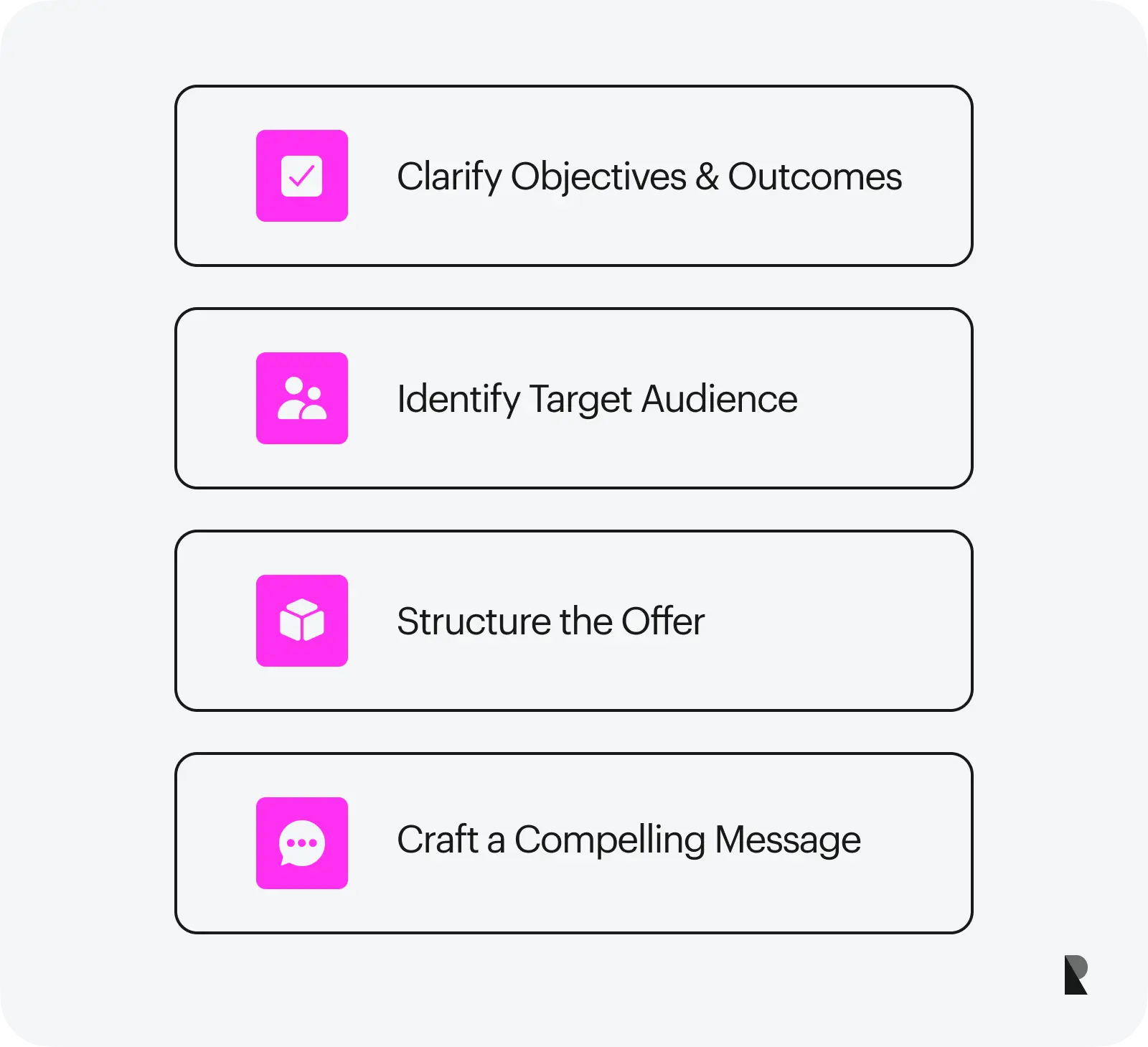
Defining objectives and desired outcomes
Goal setting is one of the most critical steps in every campaign and strategy. It supports a long-term vision that could be broken down into short-term efforts and motivations. It creates a clear roadmap and channels the company's efforts in the right direction.
In branding, goal setting defines the company's objectives within a specific timeframe. These include shaping a positive perception of the brand, building trust with customers, achieving a particular number of positive reviews, increasing social media followers, etc.
Along with providing clarity and motivation, goal setting is vital for measurement, accountability, and a sense of achievement. It underlies a company's desired outcomes and the basis for evaluating the effectiveness of your campaign.
Although a branding campaign may seem intangible and hard to calculate, with modern tools, you can measure ephemeral aspects such as people's feelings towards your brand by estimating their sentiments through comments, likes, and dislikes. This is where professional agencies come into play. They help measure branding campaigns' success through qualitative and quantitative methods.
Defining your audience
Defining the audience is another crucial factor of an effective branding campaign. Much like marketing and advertising, it underlies the efficacy of all endeavors. Analyzing such factors as age, gender, location, income, lifestyle, demographics, preferences, and shopping habits gives a company the necessary knowledge to do these tasks:
- tailor the brand message,
- speak with consumers in the same language,
- make better business decisions,
- and reach people who are more likely to buy from them.
Furthermore, as different mediums work better for various market segments, defining your audience for a branding campaign is vital to using the right channel and type of campaign to reach potential clients and make communication seamless, pleasant, memorable, and beneficial for both parties.
Defining your offer
The offering is not just a single product or service. It encompasses value, vision, personality, and integral characteristics that a company adds to its items, such as quality, exclusivity, safety, or convenience. It represents everything the company sells.
Defining your offering comes with numerous benefits. First, it ensures customers understand what they get, so there are no terrible surprises or disappointments. Second, it recognizes and highlights the value of owning your product. Third, it builds trust and loyalty through transparency. Finally, it delivers the critical branding message to the target audience's minds and generates appropriate associations.
Formulating your message
Brand messaging is closely connected with an offer. It expresses your individuality, ideology, and mission, tells your story, demonstrates your company's value and culture, and distinguishes you from the competitors.
When clearly defined, messaging establishes trust with the audience, amplifies branding, marketing, and advertising efforts across channels, and makes your business more visible and recognizable.
Types of brand campaigns
Branding campaigns come in different shapes and sizes. For instance, it can be a search engine marketing campaign to increase organic traffic and improve website positioning or a rebranding campaign to shift public perception from a negative image to a positive one. Here are the most popular of them that you can launch to achieve your ultimate goal.
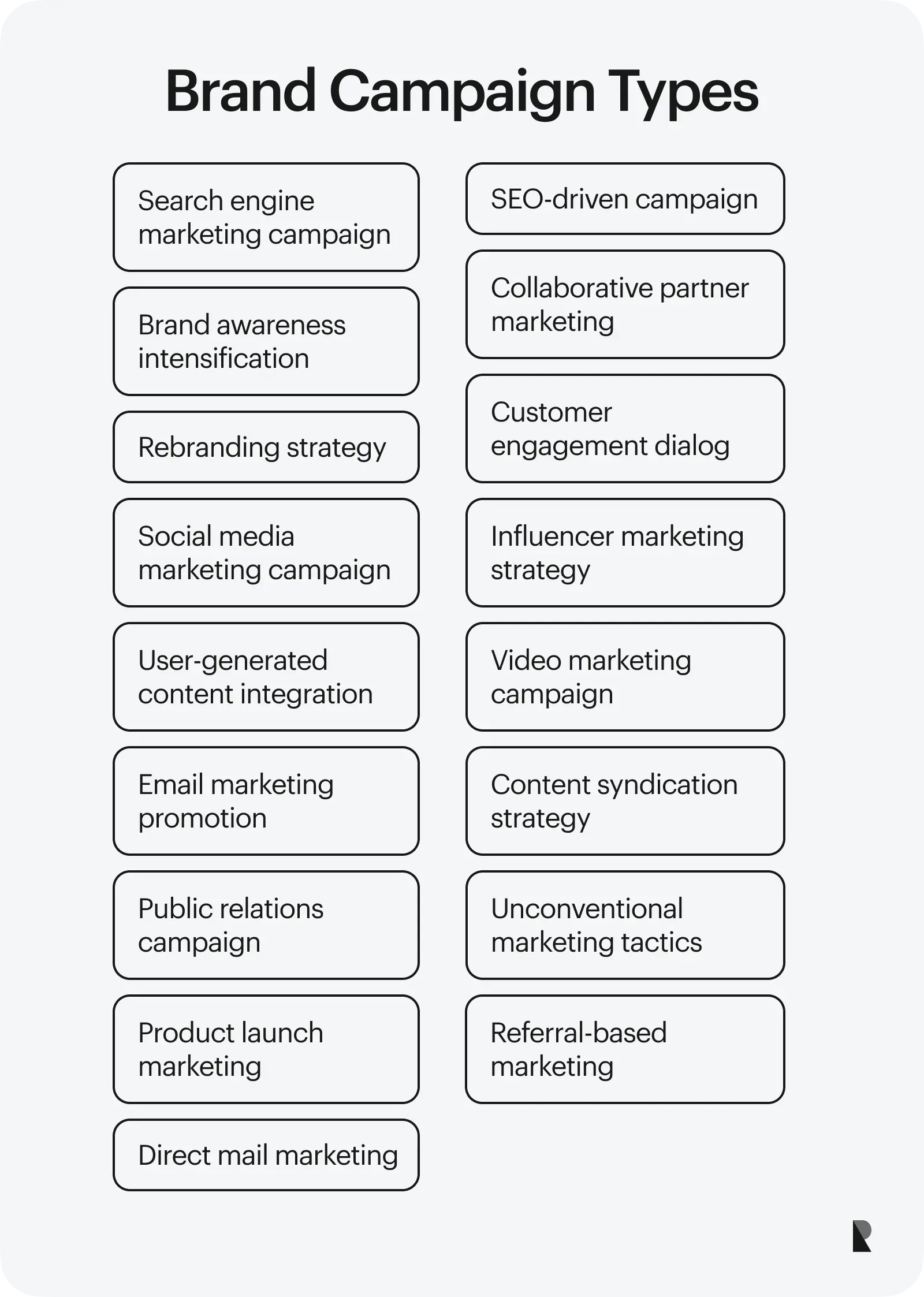
Search engine marketing campaign
Search engine marketing is a technique for establishing, promoting, and cementing a company's brand identity across popular search engines. It utilizes paid (PPC) and unpaid (organic traffic) methods.
SEM campaigns pursue different goals. They may improve a company's reach in the digital space, increase a website's visibility by placing it higher on results pages, or generate organic traffic by attracting customers toward the brand. Whatever the case, a well-thought-out SEM campaign raises awareness, drives consideration, and builds trust. It improves brand identity in Google, Bing, or Yahoo, which are the top choices for customers when they start their searches.
Intensification of brand awareness through a campaign
Brand awareness is the first step of the buyer's journey. It is the foundation for a customer's thorough understanding of the difference between a company and its competitors. Companies use branding campaigns to increase this aspect.
A branding campaign has the unique ability to generate certain emotions. It instills feelings in the communication and naturally improves customers' ability to identify a brand. It uses powerful images and consistently delivers messages to leave a strong impression.
Some companies also use it to educate customers, establish strong relationships, and build trust and loyalty, ensuring the company is at the top of their minds during purchase decisions.
Rebranding campaign
A rebranding campaign is a set of actions to change the company's public perception. It can be used to shift away from a negative image, promote an essential change in the company's persona, or ease the merger with another organization. Alternatively, some companies use it to refresh their image, improve their position in the market, or enter a new market segment.
The main goal of a rebranding campaign is to reconnect with customers and reestablish a brand within the marketplace. Rebranding could be proactive (it implies thorough preparations) or reactive (done spontaneously). Both are not one-time events. As customer perception changes do not happen overnight, rebranding takes time and involves many steps.
Social media marketing strategy as a campaign
With over 5 billion social media users and a dozen platforms in the wild, social media campaigns are one of the most popular and reliable ways to build, promote, and reinforce brand identity. They are widely used to connect with existing customers, expand the company's reach, and acquire new clients.
Generally, this type of campaign implies creating posts, stories, or videos to drive engagement, generate buzz, and encourage the audience to share content with others. Companies also utilize paid ads to intensify their strategy.
Utilizing user-generated content in a digital marketing campaign
User-generated content is an underdog of branding campaigns. However, as practice shows, it could be increasingly beneficial, even though it does not get proper credit.
As people love to be heard, companies have a golden opportunity to collect valuable reviews without much effort. On the other hand, over 80% of respondents agree they will try a product if a friend recommends it. A user-generated content campaign combines these two factors and provides companies with a reliable instrument for building a brand among clients and their friends, making everyone happy.
Promoting through email as a marketing campaign
Email marketing is an oldie-but-goodie type of branding campaign. With 4 billion registered accounts and an incredible ROI of $36 for every $1 spent, it is a top priority for reaching the target audience with the brand message, promoting the company's personality, driving conversions, and generating sales.
Email marketing is also great for connecting with clients and establishing close, healthy, and friendly relationships. It helps build trust, loyalty, and a strong brand identity, nurturing an ever-growing fan base.
Creating public relations through a campaign
Public relations are a subset of general marketing programs; however, it goes perfectly with branding. Used to create a positive public image and strong reputation through establishing and nourishing relationships with customers, it naturally drives engagement over the brand's identity, increases company awareness, and builds credibility and trust.
Public relations campaigns take different forms. They could involve corporate communications, internal communications, or crisis communications. But in a nutshell, they create stories in various mediums and get media coverage by sending press releases. They reach the audience in a meaningful and impactful way across multiple touchpoints.
Launching a product through a marketing campaign
A product launch campaign informs the target audience about the addition of a new product and coordinates all paid and organic marketing efforts to increase awareness of the launched product.
As a rule, it has three primary phases. The pre-launch stage includes research, road mapping, and developing a strategy based on product and target audience. The launch stage implies supporting the roll-out process through various means and modes of communication. It can be an event, ads on Google, an email marketing campaign, etc. The post-launch stage involves analysis of the efficacy of the previous stages, collecting customer feedback, and creating a strategy to improve the launched product.
Referral-based marketing campaign
A referral-based marketing campaign supports branding through a word-of-mouth initiative. It partners with customers by encouraging them to promote brand identity or its launched products in exchange for some reward. The reward could be money, a discount, free items, or a special promotion.
With numerous benefits, such as cost-effectiveness and high customer lifetime value, it is one of the most popular ways to attract new customers, build trust, and increase brand awareness. It works great for the B2B and B2C sectors.
Search engine optimization as a campaign
Search engine optimization is an integral branch of search engine marketing. It focuses on improving the brand's ranking and visibility in the search engines. It includes a series of well-coordinated efforts to build trust with Google and services alike, generate organic traffic, and strengthen the website's positioning on the results page.
The primary SEO campaign includes auditing the website for technical issues, optimizing its work, finding relevant keywords, publishing content, and creating backlinks. It uses different methods and may run different campaigns simultaneously to achieve better results.
Collaborative marketing campaign with partners
Joint marketing campaigns involve collaboration with businesses in the same or adjacent niches. They entail strategic cooperation with two or more organizations to achieve common branding goals, such as increasing brand exposure or, in some cases, cementing a company's position in the community when co-marketing is done with charities or local organizations.
This type of branding campaign has numerous benefits. First, it enhances the brand's image and reputation. Second, it helps to expand audience reach. Third, it increases the fan base. Finally, it opens new opportunities for branding and marketing by using shared resources and combining efforts and strengths.
Engaging with customers through a dialog campaign
Dialog campaigns are casual types of branding campaigns. They include various methods for encouraging customer interaction through conversation. They can be initiated in different communication channels, interaction points, and formats, such as chats, messages, emails, phone calls, dialog boxes on a website, etc.
A dialog campaign aims to personally connect with the target audience, build trust, and establish healthy relationships. It speaks to customers using personalized content, colloquial language, and relevant brand messages.
Marketing to influencers through a campaign
Influencer marketing is an increasingly popular form of social media marketing. It has the unusual power to promote brands and influence customers' opinions and perceptions of companies through word-of-mouth. In general, it is used to raise awareness, but it could also be beneficial for launching new products or bringing traffic to your website.
Collaborating with a famous persona on social media platforms is at the core of influencer marketing. Companies usually choose modern-day celebrities whose followers are the company's target audience.
Using video in a marketing campaign
Do you know that videos make up the majority of all internet traffic? They are an increasingly popular format for educating, informing, and entertaining customers. Over 80% of companies use videos for branding and marketing campaigns, as they deliver higher ROI than images, captivate and draw attention, and boost SEO parameters. According to studies, they are one of the best-performing marketing strategies.
The use of videos in the campaign is diverse: product videos, demos, testimonials, live streams, and even user-generated content. The best part is that with YouTube and numerous tools to create professionally-looking clips, videos are cost-effective solutions that do not require a professional videographer. Any company may introduce them in their campaigns.
Content distribution through syndication as a campaign
Content marketing distribution is a popular tactic in the search engine marketing field. It entails republishing branded content on other websites or platforms. It could be initiated by the company or third parties that use your content in their platforms as an excerpt or edited-down version.
Content syndication is beneficial for reaching a large audience and amplifying the company's value. The deal is the company establishes itself as a trustworthy, authoritative voice in the niche by providing relevant content through various distribution channels, such as digital publishers or industry influencers.
Unconventional marketing campaign
Known as "guerrilla marketing," unconventional marketing is gaining popularity among companies across niches these days. It aims to drive publicity, increase brand awareness, and strengthen a company's positioning in the market by using non-traditional, bizarre, and even extravagant methods that, as a rule, evoke such feelings as surprise, wonder, or shock.
Guerrilla marketing comes in several formats: outdoor, indoor, experimental, and event-based. The main benefit of unconventional marketing is that it does not require huge investments since implementation is relatively cheap. All you need is a unique, creative, or intellectual idea that gets a response from your clients and directs their attention to the brand's personality.
Direct mail pieces in marketing
Direct mail is a bright representative of traditional marketing campaigns. The irony is that it became obsolete when email marketing appeared decades ago.
However, today, when digital inboxes are overcrowded, conventional direct mail communication has a new life. Being humble, personal, and meaningful is a powerful way to stand out among companies prioritizing only digital communication.
Direct mail uses printed material and the postal service to deliver brand messages through promotions, advertising appeals, and branded stationery. Not only does it directly communicate with the geographically-segmented market, but it adds a tangible touch to the conversation. That increases brand awareness and intensifies the brand's reputation.
Examples of some of the best campaigns in history
Nike and "Just Do It"
Nike has become a global powerhouse in the athletic footwear and apparel industry because of its high-quality products, well-thought-out branding strategy, and regularly conducted campaigns.
I bet you have heard their famous slogan, "Just Do It," once or twice. It naturally speaks to customers of all ages who need a boost to overcome their challenges in sports and pursue their dreams fearlessly.
This branding campaign was realized through various means. Starting with collaboration with athletes from diverse backgrounds and disciplines and ending with a series of TV ads, it was so well-played that today, the company is synonymous with innovation, performance, and sport.
Dove and "Real Beauty"
Dove is one of the most popular leaders in the beauty industry. It has millions of followers worldwide and billions of dollars in revenue. Its stunning success lies in its products and groundbreaking branding strategies.
In 2004, the company challenged and redefined traditional beauty standards and associated its brand name with real women, not perfect models. By celebrating the natural beauty of all women, it instantly won the hearts of its regular buyers. Twenty years later, it still preaches the same ways, promoting its philosophy through multiple branding, marketing, and advertising campaigns.
Apple + Mastercard
Apple presents us with one of the best marketing campaigns based on a clever partnership with one of the most famous companies in the payment transaction sector. Apple and Mastercard turned out to be a match made in heaven, as they successfully launched a new feature called "Apple Pay" almost ten years ago.
They adopted a multifaceted approach involving traditional advertising tactics, branding, social media, and guerilla marketing. Due to this prolific collaboration, Apple regained its status as a pioneering company, whereas Mastercard positioned itself as a leader in contactless payment safety.
Today, nothing has changed as their branding campaign continues to impress, making "Apple Pay" the safest payment program in digital wallet.
Coca Cola and "Share a Coke"
Coca-Cola and its iconic "Share a Coke" campaign are great examples of how debranding the traditional brand logo used on products may bring huge success by attracting the younger generation's response.
The company has replaced its iconic logo, "Coca-Cola," from one side of a bottle with the phrase "Share a Coke with" followed by a person's name. As it was done during the ever-growing popularity of social media in 2011, it instantly developed more personal relationships with younger consumers, cemented the company's position in the market, and drastically expanded its fan base.
Always and "Like a Girl"
Ten years ago, Always's branding campaign "Like a Girl" generated a huge buzz around the company's personality and its commitment to empowering women and young ladies to overcome their challenges and fears. It started a small revolution that made the community spark a conversation and reconsider "girl" as a term.
Created a video where young girls demonstrated the strong side of the term by performing such actions as running, throwing, or fighting with confidence and pride; the global leader in hygiene products demonstrated female strength and ability. It connected its name with "girl's power" and became integral to their lifestyle, strengthening its position for future decades.
Heineken and "Worlds Apart"
Heineken also decided to challenge stereotypes and prejudices with their ad campaign. The team brought together individuals with opposing viewpoints on divisive issues and invited them to engage in open and honest conversation in a safe and inclusive place. The latter was created with the help of their primary product to demonstrate its transformative powers of listening, empathy, and mutual respect.
As a result, the company successfully increased brand awareness and revealed its strong and inclusive personality.
Jonathan Bennett + Tinder
Tinder prides itself on culturally relevant branding campaigns that improve its positioning, lead to safety efforts, and ensure security dating on its app and online platforms. Collaborating with influencers like Jonathan Bennett, "Mean Girls" alumni, drives awareness about scammers in online dating, toxic behavior, and online financial frauds.
Such a responsible approach and socially conscious behavior could not help but increase fans around the service and reinforce its brand's image and reputation.
Google and "Year in Review"
Google's "Year in Review" branding campaign is one of the most ingenious examples in our collection. Started in 2009, this reflective campaign has become one of the most popular world projects launched annually. It provides an annual retrospective look at the trends and patterns in Google search queries, uniting users across the Globe.
The power behind this campaign is that it demonstrates that Google cares about its users and their concerns and issues. It generates unity and uplifting sentiments that gather people around the company and make it an integral part of their lives.
Conclusion
Branding campaigns refer to a set of thought-out and well-coordinated initiatives across distribution and communication channels. They aim to make businesses widely recognizable and memorable by putting the company's story and message in front of an audience and revealing its personality, vision, and mission in an appealing, meaningful, and impactful form.
Unlike marketing or advertising, which generally promote products or have short-term effects, branding campaigns zero in on the big picture. They pursue long-term effects and assist the company at every stage of its growth and development. The power behind branding campaigns lies in their versatility.
They can be realized in different ways. Depending on the goal, they could be presented as search engine optimization campaigns, referral-based marketing campaigns, or even guerilla campaigns with untraditional approaches.
Every company needs a successful brand campaign regardless of age, size, niche, and audience. Even the industry leaders regularly conduct them to regain their position, refresh their brand image, and reconnect with the audience.
Suppose you are considering a branding campaign for your company. In that case, hiring not just a digital marketer or senior copywriter but a professional agency with recently completed projects and successfully launched products in that field is crucial.
Sep 26, 2024
